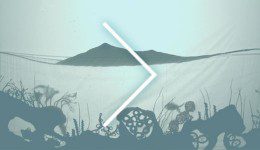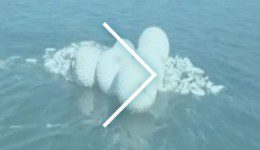Resources

This section provides you with some downloadable publications, videos, fact sheets and tutorials.
The Ghost Net ID Guide: is a field guide that gives full instructions on how to record information about the nets as well as a catalogue of the different nets we have found to date: who uses them, what they are used for and any other information that we have learnt.
A more dynamic version of the Ghost Net ID Guide is What Net is That? All you need to do is enter a few metrics of the net you have found here and see if it is in our database. A really cool tool.
All About Nets: is a booklet designed to give some background to the fishing industry and the nets they use.
Tutorials: these give a step by step instructions on how to download the software for recording data, the various ways to record data and how to upload it to the website.
Videos: Over the course of time we have been privileged to have been involved in several filmmaking exercises, some of which are available here.
Fact Sheets: these four fact sheets are aimed at the upper primary level. Each has a narrative, some interesting information plus some acitivites for the classroom and discussion points of interest.
Publications: include GNA reports and published scientific manuscripts that GhostNets Australia has been a partner to. Reports include Data summaries, annual reports and newsletters.
Explore the thumbnails below to watch films, download reports and learn about how to be a ghost netter.
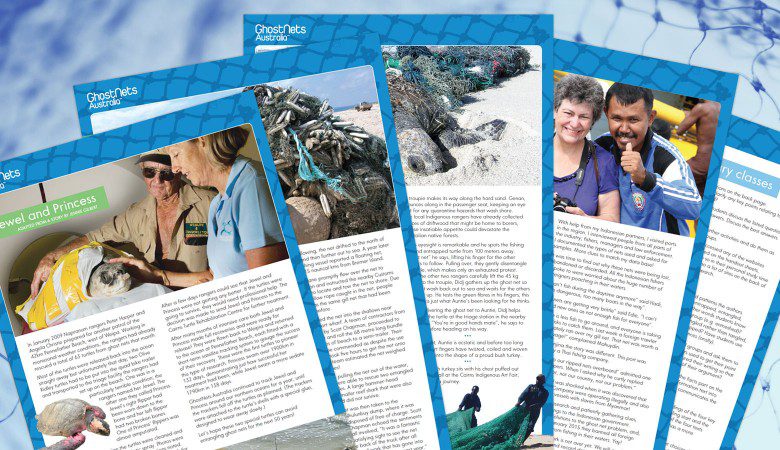
Fact Sheets
This set of four handout sheets provides four lessons to introduce and discuss the problems of marine debris and ghost nets in particular in the classroom or by yourself.
They are aimed at upper primary level. Each one has a narrative, supporting activities and suggested topics for discussion. The fifth fact sheet lists websites for further learning.
Fact Sheet 1: A Deadly Journey by Shannon Tyrer gives an overview of the issue by describing the journey of a net from Indonesia to Australia, who id involved and what happens.
Fact Sheet 2: The Net That Returned by Jane Dermer is about a particulaly large net that was found off the north east coast of Arnhem Land, NT and the incredible difficulties that rangers and their partners experienced while trying to remove it.
Fact Sheet 3: Jewel and Princess adapted from two stories by Jennie Gilbert is an inspiring account of the horrific injuries that two turtles endured and their miraculous recovery at the hands of the Cairns Rehabilitation Centre.
Fact Sheet 4: The Net Detective by Riki Gunn documents the steps taken by Ghostnets Australia to find out where the nets come from, who is responsible and why it is happening.
Finally, but not the least, the Handout Sheet provides some suggestions for teachers on how to use the fact sheets and some extra activites. There are also some extra websites on related topics as well as some general information about GhostNets Australia.
Downloads
- All Fact Sheets
- Teacher Support Sheet
- Jewel And Princess
- The Net Detective
- A Deadly Journey
- The Net That Returned
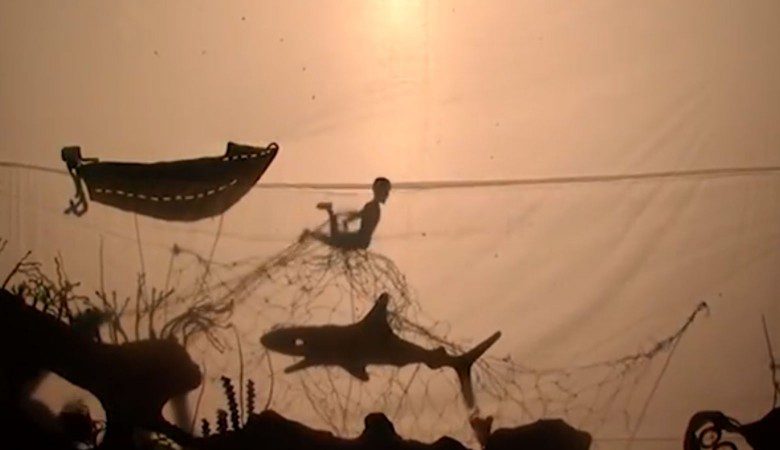
Videos
We have been fortunate to be involved in several filmmaking events. The highlights of which you can watch below. they are not the full versions but if you want copies of these contact us on info@ghostnets.com.au
Blackmores Ghost Nets Art Project
As part of their commitment to sustainability, Blackmores are proud to be working with GhostNets Australia. Check out our recent project, helping raise awareness of the serious problem of ‘ghost nets’ – large fishing nets that have been lost or discarded at sea which cause damage to marine wildlife and effect of loss of food and lifestyle for the Indigenous Australians around the Gulf of Carpentaria.
SeaChange: Tackling Ghost Nets
This short film outlines the Global Ghost Gear Initiative premise and showcases a handful of the excellent ghost gear reduction and removal projects being implemented, at the local level, globally including some fantastic footage from GhostNets Australia.
“The Young Man and The Ghost Net” Moa Island Torres Strait
Duration: 10:18
Its October 2010 and St Pauls village on Moa Island celebrates not only the first Puppet Show of it’s kind in the Torres Strait, but the first puppet show ever made out of ghost nets and marine debris.
Ghost Nets – Interview with Riki Gunn
Duration: 8:12
Kerri-Anne Kennerley discusses ghost nets with Riki Gunn, Djawa Yunupingu and Brian Scarsbrick.
Wildcard
Duration: 5:10
This short video shows the retreval of a ghost gill net at Money Shoals, NT by the crew of the mackerel fishing vessel FV Wildcard, in November 2010.
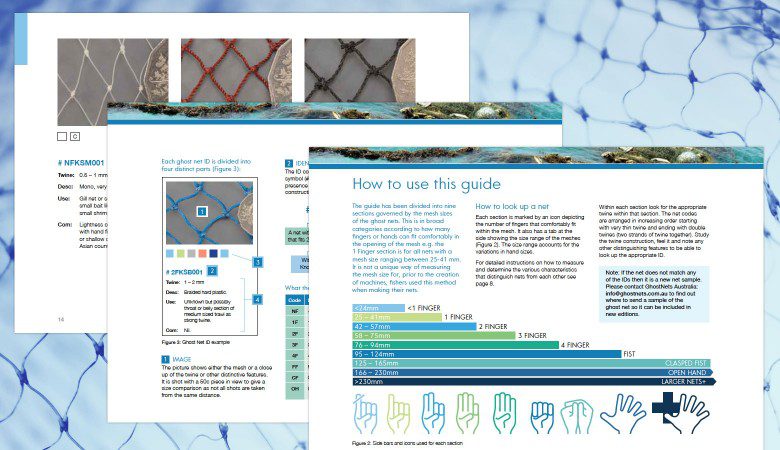
Ghost Net ID Guide
This Guide provides information about ghost nets and data gathering for the Ghostnets Australia Database.
In this Guide, you will find known information about the probable users and uses of the ghost nets washing up on north Australian shores.
This guide also provides simple instructions about how and what data needs to be recorded to aid GhostNets Australia in its efforts to reduce this significant flow of nets. Stopping the flow of nets is preferred to continually dealing with the ghost nets at the end of their destructive journey.
You can download the full PDF below or if you only what to learn about a particular type of net that you have found then you can go to an interactive version in the What Net is that page.
Downloads
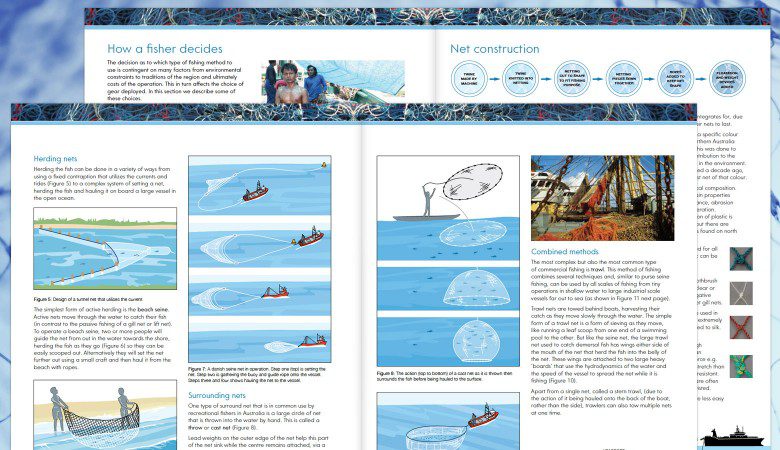
All About Nets
Why do fishers use the various different types of nets to capture fish? What is the difference between gill nets and trawl nets? How nets are constructed? This booklet helps to answer some of these important questions.
The purpose of this booklet is to explore the various characteristics of ghost nets, such as mesh size and twine diametre. This information, along with other collected data, can help us to work out which fisheries a ghost net may have come from.
A PDF version of this booklet can be downloaded below.


